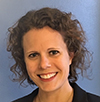3 minutes
Examine your current practices and try out suggested next steps.
Before you add salt to a soup you’re about to eat, it’s a good idea to taste it. Before you treat an illness, it’s a good idea to seek a diagnosis that considers all symptoms. Similarly, it’s a good idea to assess the state of your organization’s leadership development program before you take action to improve aspects of it.
By considering and responding yes or no to the leadership development best practices statements below, you’ll be able to identify strengths and weaknesses in your organization’s current efforts, plus:
- reflect on plans that could strengthen leadership development within your organization, from front-line leaders to executives that guide organizational needs
- consider steps that would help build a more inclusive environment
- review and consider taking the recommended action provided for each.
1. Critical competencies or capabilities are clearly defined for leadership. Y / N
When you define critical competencies and capabilities, leaders get a clear understanding of what is needed to succeed in your organization. Creating these definitions also creates a framework for leadership development and establishes a standard for measuring leaders as they develop. Knowing key competencies/capabilities also serves as a guide for future leaders to begin building their skillsets before moving into leadership positions.
Recommended Action: Establish a leader success profile or competency/capability framework and share it within your organization. Create connections between current development opportunities (internal or external) and the critical capabilities/competencies they support.
2. Leadership development is customized to an individual via an assessment of that person’s strengths and opportunities. Y / N
For some, identifying a starting point for development can be challenging, but providing an understanding of current skills in relation to critical competencies or capabilities offers an individual direction to create a plan. Awareness of current skills can also support a more inclusive environment and collaboration among leaders at all levels. In such an environment, strengths can be leveraged, and leaders and aspiring leaders can offer support to one another.
Recommended Action: Offer an evaluation or assessment aligned to your leader success profile/framework to build awareness of skills for individuals and their supervisors, provide focus for development, and align individual needs to those of the organization.
3. Future leaders can be identified through data and demonstrated behaviors. Y / N
When building bench strength for future leadership needs, it is important for leaders or human resources to have a sense of current leadership capabilities and future leadership potential. Evaluating leaders on current skills and potential growth can help remove bias and promote readiness for a future role.
Recommended Action: Complete a readiness evaluation or assessment to understand leaders’ and potential leaders’ current skills and target growth areas in relation to the critical capabilities.
4. Leadership development is a planned sequence, not an individual event. Y / N
Offering on-demand training and resources is supportive but without a formal program or direction, development plans can lack intention and consistency among leaders. Providing leadership development programs or tracks demonstrates the importance of development, provides accountability and can build relationships among cross-functional leaders.
Recommended Action: Establish leadership development programs, not just self-directed leadership offerings, that develop leaders as a group, aligned to the critical capabilities of the organization.
As you begin planning and thinking about your talent development initiatives for 2022, this assessment can help you reflect on actions you’ve taken and areas you want to focus in the coming year. Review this assessment on your own, share it with your HR or executive team and use it to start conversations to grow your leadership development strategy.
Jennifer Stangl is director of professional development at CUES. Contact her to discuss customized team building sessions to build strong relationships and strengthen your team engagement.






